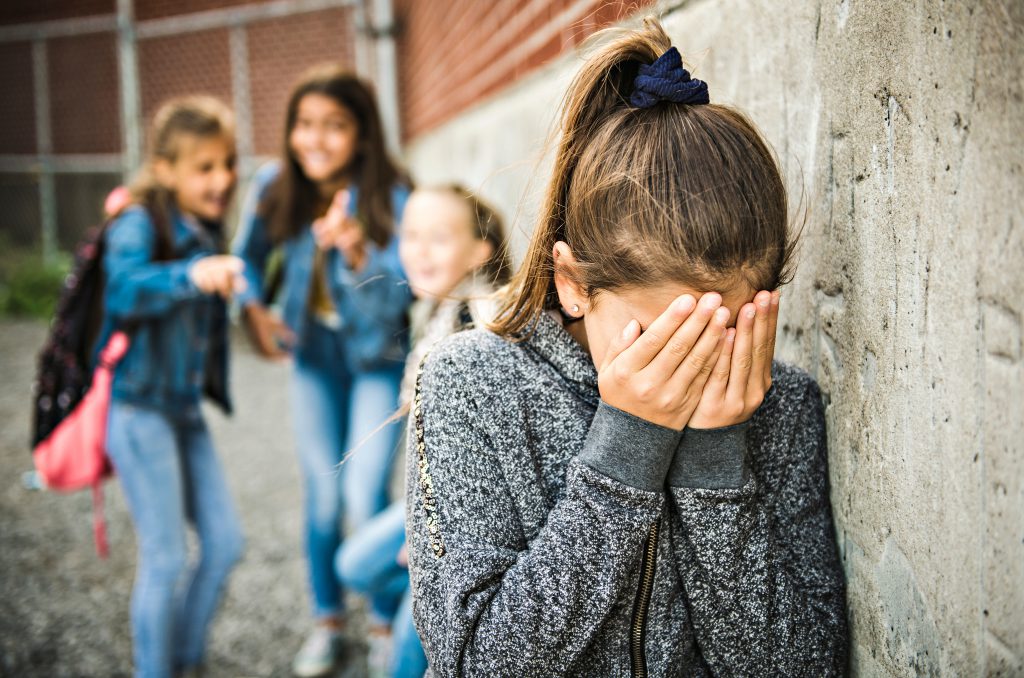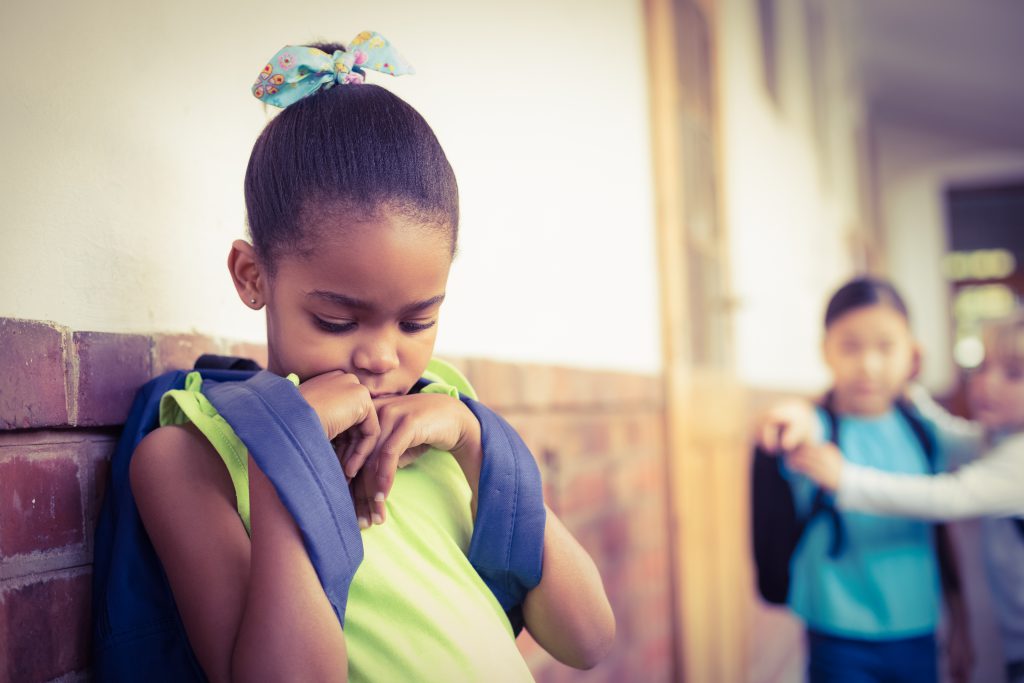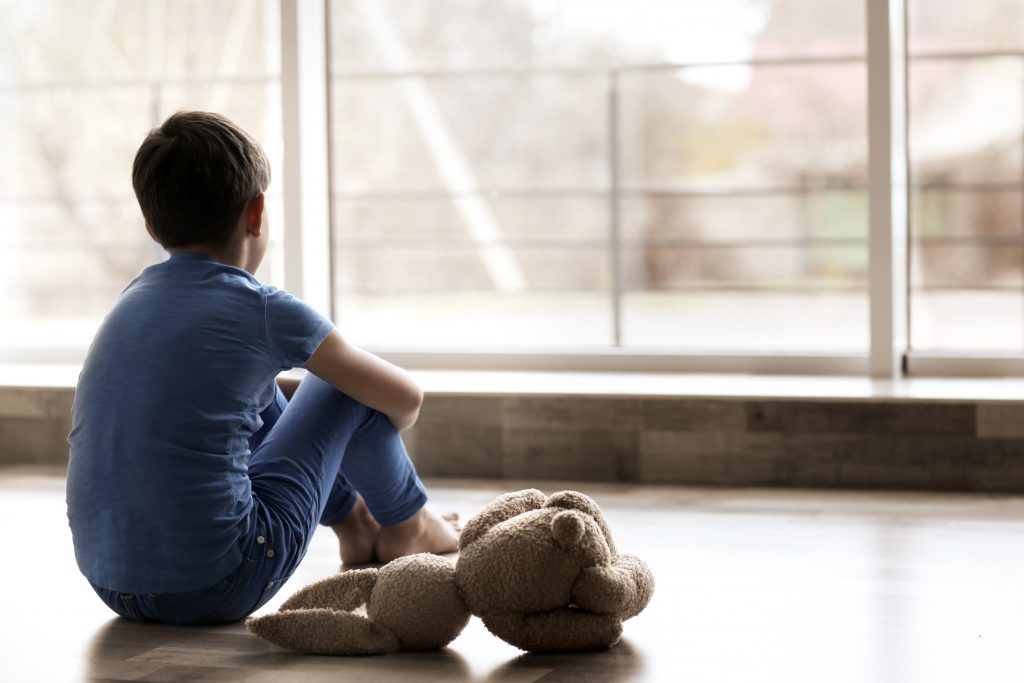Every day, children across the world are subjected to harmful and constantly evolving forms of bullying within schools. School bullying is a dangerous impediment to child development, negatively affecting children’s mental and physical health, as well as their ability to navigate educational challenges.
Victims of school bullying carry the impacts of those experiences beyond schools, with trauma frequently affecting life-course trajectories (Peguero & Sung Hong, 2020). In addition to its direct impacts, school bullying is often a driver of other school-based challenges faced by children, including violence within schools – a top public health concern as recognised by the Center for Disease Control and Prevention (CDC).

Defining school bullying
Bullying is defined as “(a) physical harm toward a person (e.g., hitting, kicking, pushing) or making fun of, excluding, and/or spreading rumors about a person, (b) victimization occurring repeatedly over time, and (c) the victims do not have equal strength or power to the bully” (Peguero & Sung Hong, 2020).
School bullying is intentional aggression and victimization that takes place over an extended period of time, where an imbalance of power exists between the perpetrator and the victim. Often, other students within the same school will be aware of the bullying but will not report the bullying out of fear of being victimized next (Zych, Farrington, Llorent & Ttofi, 2017).
Historically, definitions of bullying failed to adequately define the breadth and scope of the act. Bullying was commonly understood as teasing amongst and between children. This definition has now evolved to comprise many different forms of bullying involving varied groups of school students and more recently, online platforms (Zych, Farrington, Llorent & Ttofi, 2017).
Researchers have identified four different categories of school bullies; (1) physical bullies, who use physical force such as hitting or kicking. Most commonly, physical bullies are boys; (2) verbal bullies, who use words to humiliate or hurt the victim. This form of bullying is harder to detect in schools as it leaves no visible scars, although it can have devastating effects on the victims’ mental health; (3) relational bullies, who purposefully encourage their peers to exclude particular children at school. This form of bullying is common amongst girls; (4) reactive bullies, who impulsively taunt their victims into fighting or quarrelling with them (Smokowski & Kopasz Holland, 2005).
Forms of school bullying
The different forms of bullying include:
- Physical bullying – kicking, pinching, hitting, pushing or damaging property (National Centre Against Bullying).
- Verbal bullying – racist or homophobic remarks, name calling, intimidation, teasing and insults (National Centre Against Bullying).
- Social bullying – encouraging the exclusion of certain students, embarrassing or humiliating a child, spreading rumours or lying, mimicking, pulling pranks to cause humiliation and damaging social reputation. This form of bullying is harder to detect (National Centre Against Bullying).
- Cyberbullying – a new phenomenon of bullying that includes using smartphones and computers to access online social media platforms, texts and websites to spread rumours and gossip, intimidate peers online, send abusive or hurtful messages, and post or share images and videos that may be harmful to the victim (National Centre Against Bullying).
Bullying often involves more than one child, whether it is a group of children causing the bullying or a group of children being witness to the bullying. There are four different participant roles in bullying: assistants, those who engage in the bullying and ¨gang up¨; reinforcers, those who play an encouraging role in the bullying such as by laughing or cheering or providing positive reinforcement; outsiders, children who remove themselves from the situation and lastly; defenders, children who attempt to support and intervene for the victim (Maunder & Crafter, 2018).
Characteristics of a school bully
Despite the different manifestations of bullying, aggressors often present similar characteristics. Bullies are frequently unable to process social information, misinterpreting regular dialogue as antagonistic. Further, bullies are often destructive and short-tempered. At young ages, because of their positive attitude towards violence and asserting dominance, bullies can be popular with other aggressive children (Smokowski & Kopasz Holland, 2005). More broadly, peers generally dislike bullies due to their aggression and failure to empathise.
Characteristics of school bullying victims
In contrast to school bullies, victims of bullying are often submissive and passive. Physically, they tend to be smaller, weaker and frail in comparison to bullies, leaving them unable to protect themselves. This physical characteristic is particularly detrimental to boys who face increased risk of being victimized by other boys who are bigger than them.

Beyond their physical characteristics, victims of bullying are usually cautious, anxious, sensitive, insecure and quiet (Smokowski & Kopasz Holland, 2005). These traits breed low self-esteem and negative self-perceptions. Victims will often blame themselves for being bullied and regularly fail to disclose incidents to supervisors and teachers, leaving them open to more bullying (Smokowski & Kopasz Holland, 2005).
Social dynamics within schools and peer pressure
Research on bullying has illustrated that individual characteristics can exacerbate vulnerability to abuse. Social inequalities, cultural factors, familial makeup and community norms can leave a child more exposed to victimization (Peguero & Sung Hong, 2020). Societal patterns of exclusion can be mirrored in school bullying due to the trends in privilege and power discrepancies. As a result, children of certain races, ethnicities, and sexual minorities face a greater risk of bullying.
The cultural dimensions of bullying are also capable of influencing student peers: creating allegiances and driving peer pressure. Within school communities, children face constant choices between groups. Participating (or not participating) in dialogue or school actions signals membership to a particular group (Maunder & Crafter, 2018).
Typically, those who are perceived as separate or ‘other’ to a group are more susceptible to bullying due to their isolated position. This vulnerability is exacerbated where children have poor social skills, an overreliance on parental protection and low-levels of independence (Maunder & Crafter, 2018). Similarly, individual experiences and characteristics make some children more likely to engage in bullying (Maunder & Crafter, 2018).
The effects of school bullying on children
Although the effects of bullying can vary from child to child, there are both long-term and short-term effects of bullying on victims and perpetrators.
The short-term effects of bullying for the victim
Victims of bullying suffer from a range of consequences that follow them into adulthood. They often grow to view themselves as outcasts and failures which consequently impacts their academic performance and triggers fears of loneliness, abandonment, anxiety and depression. Other effects include social isolation, a change in eating habits, low school attendance, poor academic performance, difficulty sleeping and an increase in illness (Hurley, 2018). As the bullying frequently takes place in schools (or sometimes online), victims of bullying develop a fear and apprehension about going to school which often manifests in physical illnesses such as headaches or stomach aches (Smokowski & Kopasz Holland, 2005).
The effects of bullying can also be physical. These can range from damaged property and torn clothing to bruises, cuts and scratches. These physical effects can have follow-on consequences. Victims may, for example, feel driven to steal money to replace damaged property, or to carry weapons to school to protect themselves. More commonly, victims of school bullying tend to internalize their pain which can increase their risk of suicidal or self-harm thoughts, which can lead to suicide attempts (Smokowski & Kopasz Holland, 2005).
The short-term effects of bullying for the bully
Although it may be difficult to empathize with a perpetrator of bullying, it is important to understand the psychological reasons as to why that child is engaging in bullying and the ways in which that bullying may affect them. The short term effects of bullying on a bully are poor school performance and poor attendance which can be related to school suspensions; an increased risk in substance (mis)use and difficulty forming relationships (Hurley, 2018).

The long-term effect of bullying for the victim
The long term effects of school bullying on victims often follows them into adulthood. This impacts their ability to form trusting adult relationships. Most victims suffer from low self-esteem and a negative self-image. They are at risk of developing eating disorders, depression, anxiety and post-traumatic stress disorder (PTSD) (Smokowski & Kopasz Holland, 2005).
The long-term effect of bullying for the bully
Similarly, bullies also carry the impacts of their childhood with them as they grow and develop. Without adequate support, bullies are likely to continue their errant behaviour into adulthood. They are more likely to abuse their spouse or child, have antisocial behaviour and abuse drugs and/or alcohol than non-bullies (Hurley, 2018).
The evolution of school bullying to cyberbullying
The growth of technology has allowed bullying to evolve and expand into the digital sphere – now being labelled as cyberbullying. The increased use of social media platforms has created varying new mediums of bullying (Maunder & Crafter, 2018). Cyberbullying comes in multiple forms, for example, the term ¨punking¨ which refers to physical and verbal humiliation between boys; ¨frape¨, modifying someone’s social media account without their consent; ¨trolling¨, known as bombarding a child with online insults and threats; ¨flaming¨, arguments online; and ¨slamming¨, group online harassment (Maunder & Crafter, 2018).
Cyberbullying has even further blurred the boundaries of bullying within schools, at home and in cyberspaces. The private home, once considered a safe space for children to escape school bullying, no longer exists. Cyberbullying transcends these geographical demarcations (Maunder & Crafter, 2018). This new form of bullying has also increased the potential scale of harm. Single incidents between children are capable of snowballing if shared by others, and it is simultaneously more difficult to assess power relationships and discrepancies online (Maunder & Crafter).
School bullying prevention strategies
Despite the evolution of bullying beyond the reach of academic institutions, bullying is still grounded in children’s experiences at school. There are numerous measures that schools can take in order to mitigate the effects of bullying. These responses primarily fall into two categories:

- Sociocultural education – schools can work to build better relationships between staff, management, students and parents by encouraging dialogue, openly challenging forms of bullying discrimination and appropriately punishing wrongdoing;
- Support policies – schools can put in place measures and systems to provide emotional and social support to members of school communities (Cowie, 2011).
Written by Vanessa Cezarita Cordeiro
Last updated on 16 July 2021
References:
Cowie, H. (2011). Understanding why children and young people engage in bullying at school.
Elinoff, M., Chafouleas, S., Sassu, K. (2004, October 1). ¨Bullying: considerations for defining and intervening in school settings.¨ Psychology in schools. Vol 41(8).
Hurley, K. (2018). Short term and long term effects of bullying.
Llorent, V. J., Ortega-Ruiz, R., & Zych, I. (2016). Bullying and Cyberbullying in Minorities: Are They More Vulnerable than the Majority Group? Frontiers in Psychology, 7, 1507–1507. https://doi.org/10.3389/fpsyg.2016.01507.
Maunder, R. E., & Crafter, S. (2018). School bullying from a sociocultural perspective. Aggression and violent behavior, 38, 13-20.
National Centre Against Bullying. Types of bullying.
Peguero, A., Sung Hong, J. (2020, December 22). ¨Introduction to school bullying and inequality.¨ School bullying.
Smokowski, P., & Kopasz Holland, K. (2005). Bullying in school: An overview of types, effects, family characteristics, and intervention strategies. Children & Schools. 27(2), 101-110.
UNESCO. (2019). ¨Behind the numbers: ending school violence and bullying.¨
UNESCO. (2020, November 3). ¨What you need to know about school violence and bullying.¨
Zych, I., Farrington, D. P., Llorent, V. J., & Ttofi, M. M. (2017). Protecting Children Against Bullying and Its Consequences (1st ed. 2017.). Springer International Publishing. https://doi.org/10.1007/978-3-319-53028-4.

